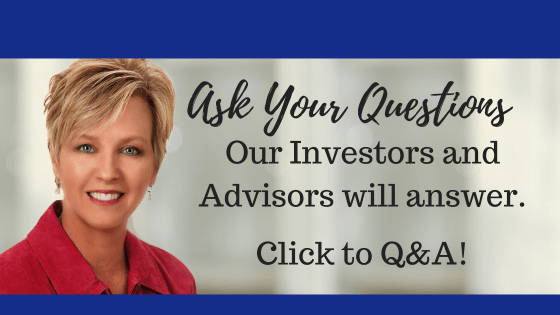- Maximizing After Tax Proceeds When Selling Your Business - June 7, 2024
- Understanding the Accredited Investor Rule 501 of Regulation D - February 27, 2024
- Which is Best – Business Broker, M&A Advisor, or an Investment Banker? - October 2, 2023
 The payback period for buying a business is defined as the amount of time it takes to recuperate an investment, or to reach a break even point.
The payback period for buying a business is defined as the amount of time it takes to recuperate an investment, or to reach a break even point.
Generally, the payback period is expressed in years. All other factors held equal, a shorter payback period is more desirable than a longer payback period.
The payback period is a simple method of evaluating the risk of an investment.
The Payback Period Formula
The formula for determining the payback period is fairly straightforward: divide the initial cash spent for the investment by the amount of net cash flow expected to be generated by the project per year.
In this equation, we assume that the initial cash outlay occurs in its entirety at the beginning of the acquisition, and the annual cash flow remains the same each year.
Advantages of Using the Payback Period for Buying a Business
The payback period method of analyzing an investment’s break even point is popular due to its simplicity and its ability to apply to and compare nearly any investment.
From a risk analysis perspective, the payback period offers a snapshot of the total amount of time that the investment will remain at risk.
Disadvantages of Using the Payback Period for Buying a Business
Though the payback method is widely accepted as a reliable method for determining an investment’s break even point, it’s also important to be aware of the formula’s shortcomings.
Listed below are some disadvantages of using the payback method.
- Time value of money – Time value of money is not considered, so cash generated in later years won’t accurately reflect its value at the time. The discounted payback formula (a variation that takes into account the time value of money) can be used to eliminate this issue.
- Equal annual cash flow – This equation assumes that the investment will generate equal annual cash flow each year until the break even point is reached. If the actual cash flow generated is weighted heavily either at the beginning or end of the payback period, it will cause the payback period method to be inaccurate.
- Profitability – The payback period for buying a business doesn’t take into account profitability after the break even point is reached. While we might assume that an investment with a shorter payback period is preferred to an investment with a longer payback period, this may not hold true if the investment with a shorter payback period offers little or no long-term profitability potential. Conversely, an investment with a longer payback period but higher long-term profitability potential may be more desirable.
Despite its shortcomings, the payback period method provides a straightforward and simple method of determining an investment’s break even point and number of years it will take to begin producing a positive cash flow for the buyer as a result of the acquisition.
Assuming buyers keep the disadvantages of this method in mind, the payback method can prove to be a fairly useful tool when evaluating multiple businesses for sale.













I have an opportunity to buy a small business for $500000. I can expect a profit after all expenses of approximately $100000 annually. Is this a good investment? The income is steady and dependable. I wouldn’t forsee any huge expenditure due to equipment failure. Business runs without requiring a humans presence more than a few hours a day.
Hi Scott,
On the surface, it appears that your proposed purchase price of $500,000 would be based on a Seller’s Discretionary Earnings multiple of five. $100,000 x 5 = $500,000.
That’s a very high SDE for a small business, so I recommend you proceed with caution!
All the best…
I am interested in buying an existing business for 1.7 million which includes a building worth $589k, inventory at $534k, and equipment worth $250k. I will be putting $300k down and financing the remainder. The average projected Net Profit is between 175k – 200k the first 5 years, growing to 300k by year 9.
EBITDA Ranges from 300k to 400k over the first 10 years.
My question is this a solid business performance? Should I be looking at the time it takes to pay back my initial 300k in cash or the entire 1.7 million total? Am I better off paying it off as quickly as possible?
Jason:
These are all good questions. Your rate of return depends on the way you frame the question. Do you include the building in the Rate of Return of the business? (I probably would not–because you could buy/sell the building without impacting the business). You are using leverage to buy the business, so your cash-on-cash return will be higher percentage-wise, but not in total dollars due to cost of money.
Here, let’s say 200K net EBITDA in the first 5 years–on a gross price of 1.1MM. That’s 18.2%. Cash-on-cash return is 66.7%.
In any case, don’t forget to look at the value of your time in the equation. People forget that if they are making $200K, but it would have cost $150K to hire someone to do all that you do as owner/manager, then your real return is only $50K from an investment perspective. Watch out for “buying a job”. On the other hand, you are quietly building equity in a business that perhaps you can sell for a multiple of what you paid for it if you do your job well and build the company.
I have a business that will yield a minimum of 12mm in gross margin to my customer. It is also strategic. What is it worth. Btw it will continue to produce for 10 + years and will grow. Product support is minimal.
Glenn: Your business is worth whatever a willing buyer is willing to pay! If you are interested in putting it up for sale, consider hiring a valuation firm for a comprehensive report. A valuation specialist will go through various methods to estimate a value based on industry, market, and other factors. If you read through the wonderful articles on this website, you can learn about some of those valuation methods.
Unfortunately, we cannot give you a value here on this website based solely upon how much margin you make on a customer. There’s simply not enough information in that one data point anyway. More relevant is the net after-tax profits and projections for the future. Obviously, the further out into the future, the wider the range of potential outcomes.
You can also hire a business broker that can give you some idea what the business is worth to a buyer in the market.
What is considered good payback period? 3 years or 5 years or 10 years ?
Hi Steve,
If you are the seller, the shorter the payback period… the better!
If you are the buyer, the longer the payback period… the better. 🙂
All the best…
What is the average payback period for a small business? I am working to determine which business I want to purchase (out of 3 available that I am considering), and I do not have an understanding of what is “normal”. Please advise, thanks!
Hi Jenna,
I’m afraid there is no “average” payback period, as you are suggesting. The payback period for a business has many factors unique to the business and your particular acquisition.
A good question to ask yourself as the buyer in the context of payback period is ‘how long would I want to wait before the business will be produce cash for me and my family to keep?’
Thanks Holly – I appreciate it.
You’re very welcome.